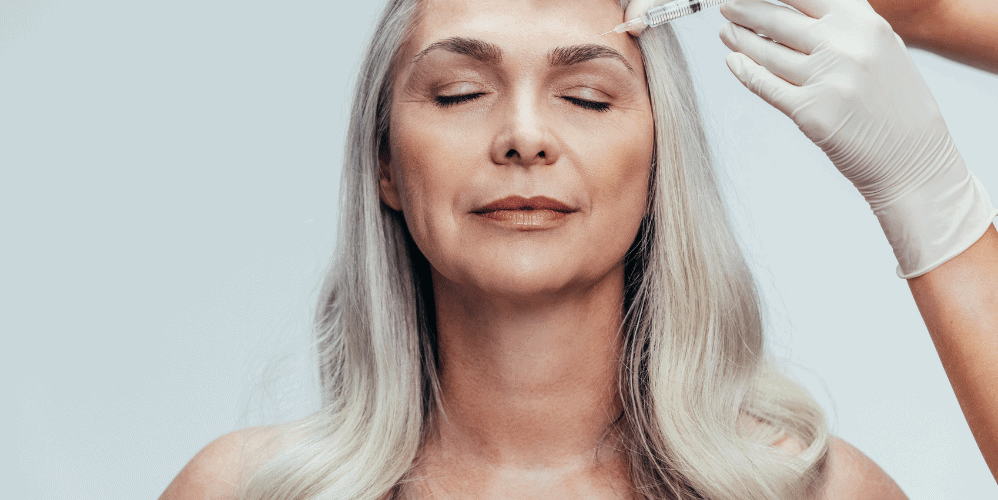How Much Botox Can You Have at Once: Decoding Safe Botulinum Toxin Dosage Limits
Ever wondered if there’s such a thing as “too much Botox” in one sitting? I get this question all the time from my clients, and today I’m breaking down everything you need to know about Botox dosages.
The maximum safe dosage of Botox in a single session typically ranges between 50 to 400 units, depending on the treatment area and medical condition. For cosmetic purposes, most patients receive 20-60 units per session, while medical conditions like chronic migraines or muscle spasms may require higher doses (up to 200-400 units).
But here’s the thing – Botox isn’t a one-size-fits-all treatment. The perfect amount for you depends on several factors that we’ll dive into below. I’ve injected hundreds of patients over the years, and I can tell you that personalization is key to getting those natural-looking results we all want.
Understanding Botox Dosage: What You Need to Know
Before we get into specific numbers, let’s talk about what actually determines your ideal Botox dose.
Botox treatments require careful consideration of multiple factors. Your provider evaluates your muscle strength before determining appropriate injection amounts. The treatment area significantly influences dosage requirements, with forehead muscles typically needing different amounts than eye areas. Your medical history plays a crucial role in establishing safe Botox limits for your specific situation.
What the Hell is a “Unit” of Botox Anyway?
Botox manufacturers measure their product in units of biological activity. These units represent potency rather than volume or weight. One unit of Botox paralyzes a specific amount of muscle tissue when properly injected. Experienced injectors understand how these units translate to visible results in different facial areas.
I’ve seen too many patients fixate on unit numbers without understanding what they actually mean. Remember: it’s not about getting the most units – it’s about getting the right amount for your specific needs.For more information on why some Botox may appear to work better than others, see this article.
Recommended Botox Dosage by Treatment Area
Let’s break down exactly how many units you can expect for different areas of the face and body:
Forehead Lines Treatment
Forehead muscles typically receive 10-30 units of Botox during cosmetic treatments. Horizontal forehead lines require careful dosing to prevent brow heaviness while still reducing wrinkles. Most patients need approximately 20 units for optimal forehead results without appearing frozen.
I always take a conservative approach with the forehead, especially for first-time patients. Why? Because overdoing it here can lead to that dreaded “heavy brow” feeling that nobody wants.
Eye Area (Crow’s Feet)
The delicate eye area requires precise Botox application techniques. Most providers inject 5-15 units per eye to address crow’s feet effectively. The thin skin around eyes responds quickly to Botox, making lower doses generally sufficient for this region.
Fun fact: I’ve found that patients with more expressive eyes often need closer to the higher end of that range to see the results they want.
Between the Brows (Glabellar Lines)
The glabellar region between eyebrows contains strong muscles that form frown lines. These muscles typically require 20-25 units of Botox for effective treatment. Proper injection into these muscles prevents the “angry” appearance many patients seek to correct. This is actually where I started my own Botox journey years ago. Those “11 lines” were driving me crazy in photos!
Jaw Slimming (Masseter Reduction)
Jaw muscles receive higher Botox doses compared to facial areas. Masseter muscles typically require 25-50 units per side for noticeable slimming effects. This treatment addresses teeth grinding while creating a more contoured facial appearance.
Neck Bands Treatment
Neck bands develop as platysmal muscles weaken with age. These vertical bands typically need 25-50 units of Botox for visible improvement. Treating neck bands requires deep anatomical knowledge to ensure safe and effective results.
Medical Botox Dosages: When Treatment Goes Beyond Cosmetic
Botox serves many purposes beyond wrinkle reduction. Medical conditions often require significantly higher dosages than cosmetic applications. Learn about the advantages of Botox.
Chronic Migraine Treatment
Migraine patients receive up to 155 units of Botox across multiple injection sites. These treatments target specific head and neck muscles that contribute to migraine pain. Clinical studies demonstrate that this dosage provides optimal relief for many chronic sufferers.
Muscle Spasm Management
Patients with muscle spasms may receive up to 400 units during a single treatment session. Upper and lower limb spasticity often requires these higher doses for effective symptom management. Neurologists carefully calculate dosages based on affected muscle groups and patient response.
I had a patient with severe neck spasms who received 200 units in her first treatment. The transformation in her quality of life was absolutely incredible – she could finally turn her head without pain after years of suffering.
Maximum Safe Botox Dosage: What the Research Says
Botox safety limits exist to prevent adverse effects while maximizing benefits. The FDA approves a maximum of 400 units per treatment session across all areas. This upper limit applies primarily to medical conditions rather than cosmetic concerns.
What Happens If You Exceed Recommended Limits?
Excessive Botox can cause unwanted muscle weakness beyond the targeted areas. Patients who receive too much Botox may experience difficulty with normal facial expressions. In rare cases, high doses can lead to antibody formation, making future treatments less effective.
I’ve seen the consequences of over-injection firsthand, and trust me – you don’t want to go there. One patient came to me after receiving way too many units in her forehead from another provider. She couldn’t raise her eyebrows at all for months. Not a good look!
Botox Dosage for Different Age Groups

Age significantly influences optimal Botox dosage requirements. Younger patients typically need fewer units due to less established wrinkle patterns. Older individuals may require higher doses to address deeper, more established lines.
First-Time Botox Patients
First-time Botox recipients should start with conservative dosing approaches. New patients typically receive 10-20 units for forehead lines as an initial treatment. This cautious approach allows providers to assess individual response before adjusting future dosages.
Ensuring Safe and Effective Botox Treatments
Want to make sure you’re getting the right amount of Botox? Here’s my actionable advice:
Choose an Experienced Injector
Board-certified dermatologists and plastic surgeons understand facial anatomy thoroughly. Experienced injectors customize dosages based on your unique muscle structure. The provider’s expertise matters more than focusing solely on unit numbers.
Have a Detailed Consultation
Honest discussions about your goals help determine appropriate Botox amounts. Good providers explain their dosing rationale during consultations. Your medical history influences safe dosage limits for your treatment.
I always tell my patients: “This is a partnership. I need to know exactly what you’re hoping to achieve so I can tailor the treatment perfectly for you.”
Follow Post-Treatment Guidelines
Proper aftercare maximizes your Botox results regardless of dosage. Avoiding exercise for 24 hours prevents Botox migration to unintended areas. Follow-up appointments allow for dosage adjustments based on your response.
Real Talk: How Much Botox Do You Actually Need?
Here’s what I’ve learned after years in this business: most people getting Botox for cosmetic reasons need between 20-60 units total across all treatment areas. That’s enough to make a noticeable difference without looking “done.”
For reference, here’s what I typically use for my patients:
- Forehead: 10-20 units
- Between brows: 15-25 units
- Crow’s feet: 10-30 units (5-15 per eye)
That adds up to about 35-75 units for a full upper face treatment. But remember – your mileage may vary!
Conclusion: Finding Your Perfect Botox Dose
Botox dosages must be personalized to achieve optimal results. Your provider should determine amounts based on your specific needs and anatomy. The right dose gives natural-looking results without excessive muscle paralysis.
Remember that more units don’t necessarily mean better results. Conservative dosing often provides the most natural-looking outcome. Regular treatments with appropriate dosing maintain results while preserving natural expressions.
Ready to get started with Botox? Book a consultation with Let Them Notice. We can assess your specific needs and create a personalized treatment plan. Don’t be afraid to ask questions about dosage – any good injector should be happy to explain their approach.
Have you had Botox before? How many units did you receive, and were you happy with the results? Drop a comment below – I’d love to hear about your experience!

